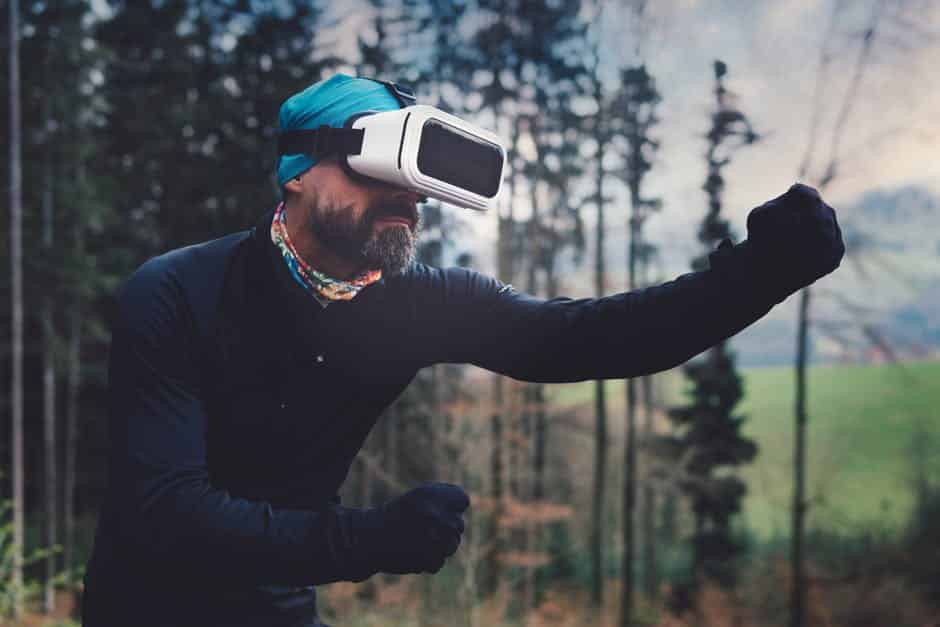AI, ML, AR, VR — with so many acronyms in the machine-meets-marketing vernacular, it’s hard to keep up with which tech does what.
There’s no doubt that artificial intelligence (AI), machine learning (ML), augmented reality (AR), and virtual reality (VR) have big implications for the future. But it can be hard to parse the differences between them all, especially the difference between AI and machine learning.
So let’s settle debate once and for all. To start, let’s define what each acronym means.
What is AI (Artificial Intelligence)?
AI (Artificial Intelligence) is the capability of a machine to imitate intelligent human behavior. AI is often broken into two groups: applied and general.
Applied AI (sometimes referred to as Vertical AI or Narrow AI) refers to “smart” systems that address a specific need, like trading stocks, or personalizing ads.
General AI (also known as Strong AI or Full AI) encompasses systems or devices which can handle any task that a human being can. These are more akin to the droids depicted in sci-fI movies, and the subject of most of our conjectures about the future.
(Learn more: Would you survive in a tech-less world? Find out with this interactive quiz.)
What is Machine Learning (ML)?
ML is a subset of AI and is powering much of the development in the AI field, including things like image recognition and Natural Language Processing.
Deep Learning is the cutting-edge technology that’s inspired by the structure of the human brain and uses artificial neural networks to process data similar to the way neurons do in our brains. It involves feeding massive amounts of data through the neural network to “train” the system to accurately classify the data.
Today’s supercomputers and the rise of Big Data have helped make Deep Learning a reality.
What’s the deal with AR and VR?
Augmented reality (AR) and virtual reality (VR) have been making a big splash in the marketing world for a few years now. These formats are more challenging to execute well, but can have a huge impact due to their more visceral, emotional nature.
As far as immersive brand experiences go, nothing beats being able feel the content as if it were yours already. From trying on digital diamonds, to wandering around your potential new kitchen, look for AR and VR marketing tactics to grow even more in the future.
How do AR and VR work?
Augmented reality uses technology to overlay digital information on an image of something being viewed through a device (such as a smartphone camera). With AR, a computer-generated image is superimposed on your view of the real world, thus providing a composite (and enhanced) view.
In other words, your real-world environment is “augmented” by computer-generated or real-world extracted sensory input, like sound, video, and graphics. Imagine watching a live sports event where you can take photos alongside your favorite players, or don virtual face paint in your team’s colors — all through your smartphone.
Virtual reality is an artificial environment which is experienced through sensory stimuli (such as sights and sounds) provided by a computer and in which one’s actions partially determine what happens in the environment.

With the advent of 360-degree cameras to capture and stream sports events, watching a football game through a VR headset lets fans feel like they’re in the stadium, looking around as the action unfolds.
While there’s still a long way to go with the technology, it’s the most realistic experience fans can get outside of flying to see their favorite athletes perform.
What’s the marketing impact of all this ML technology?
For retailers and brands, machine learning can help analyze huge data sets about their shoppers and deliver personalized communications for each individual based on their behaviors, purchases, and preferences. As more is learned about each shopper, the system gets better at predicting the right products, the right ads, and the right bids.
In today’s noisy digital landscape, look for the union of machine learning’s efficiency with man’s creativity to continue creating even better, more relevant, more personalized brand experiences for shoppers — and at a global scale.






















